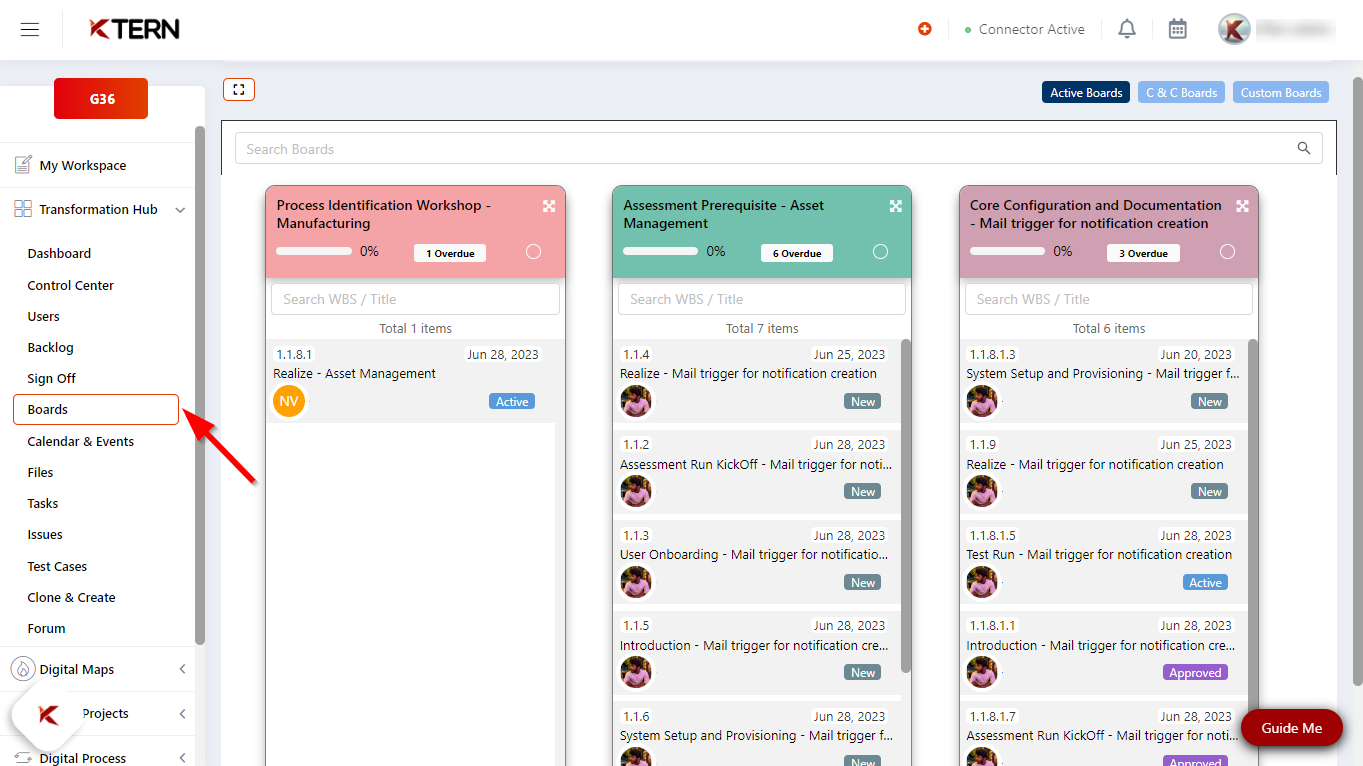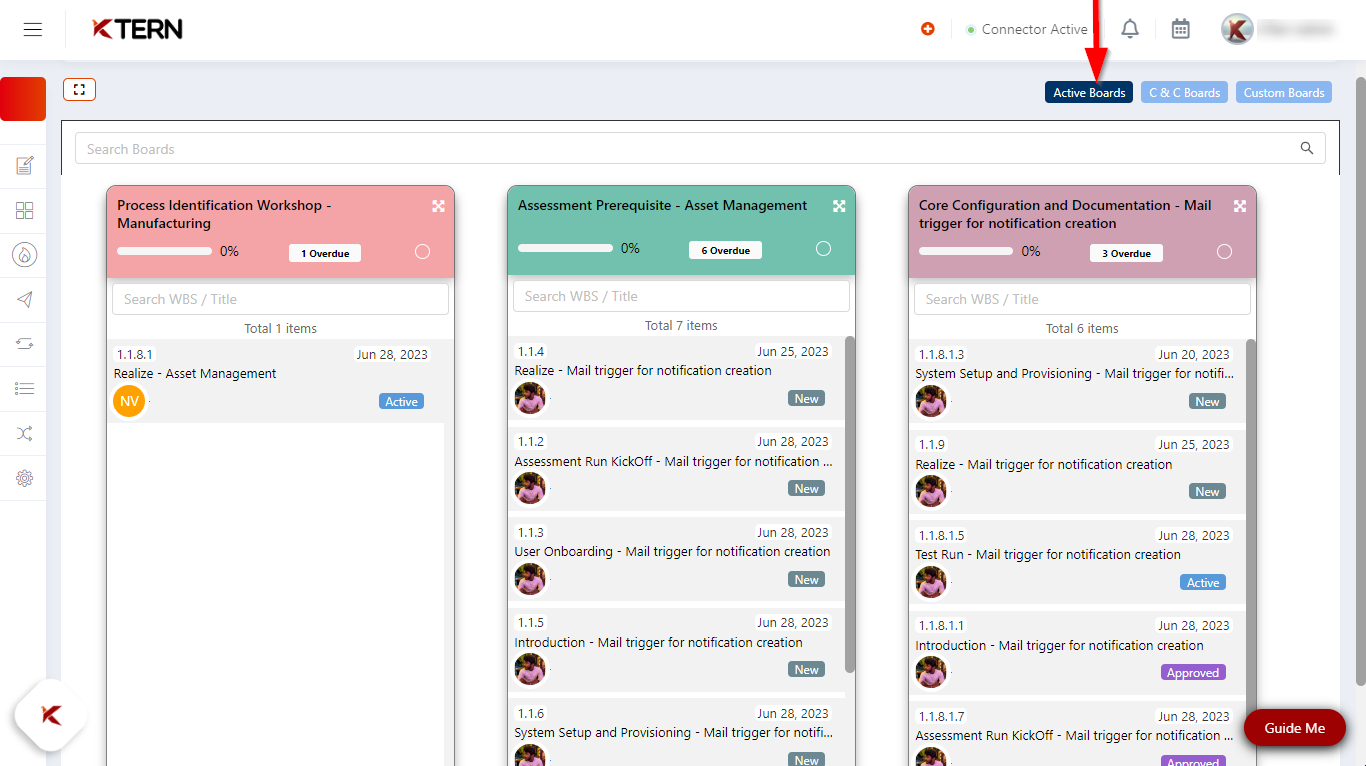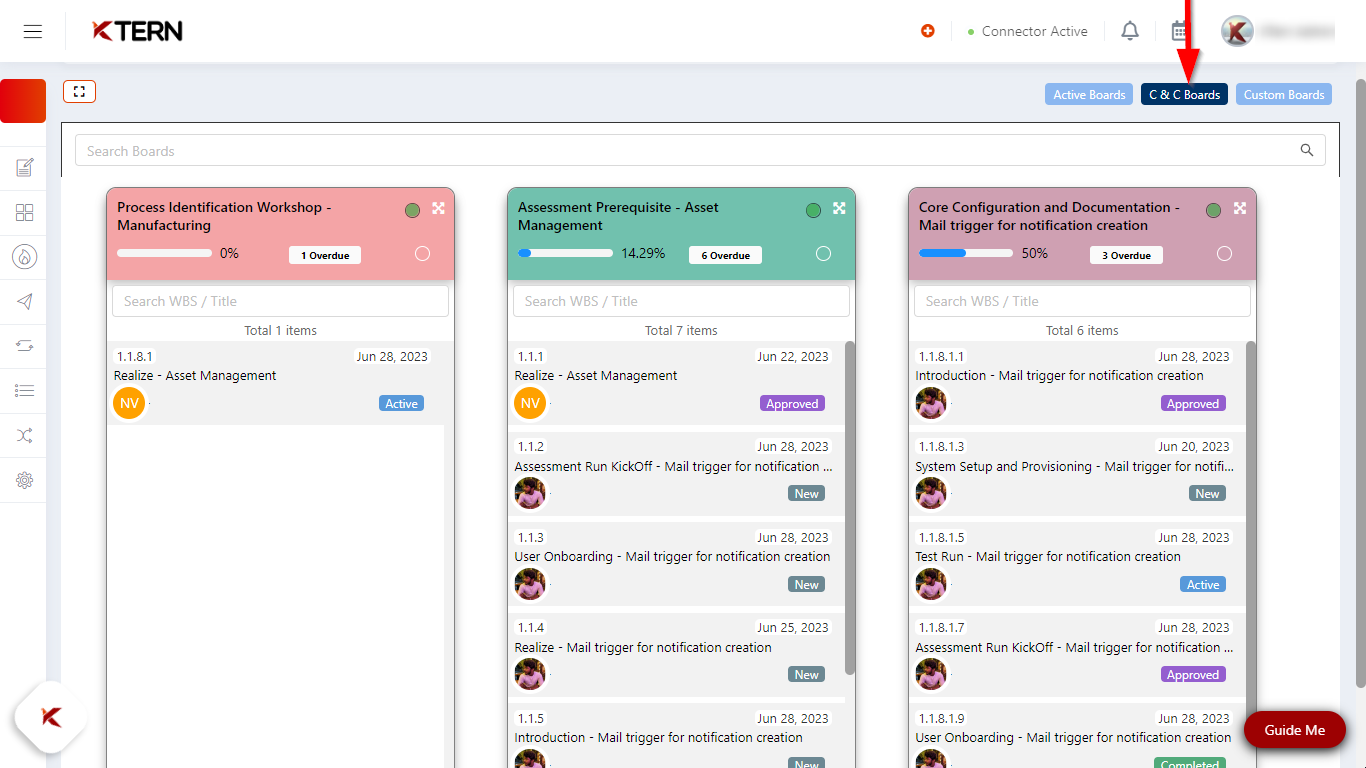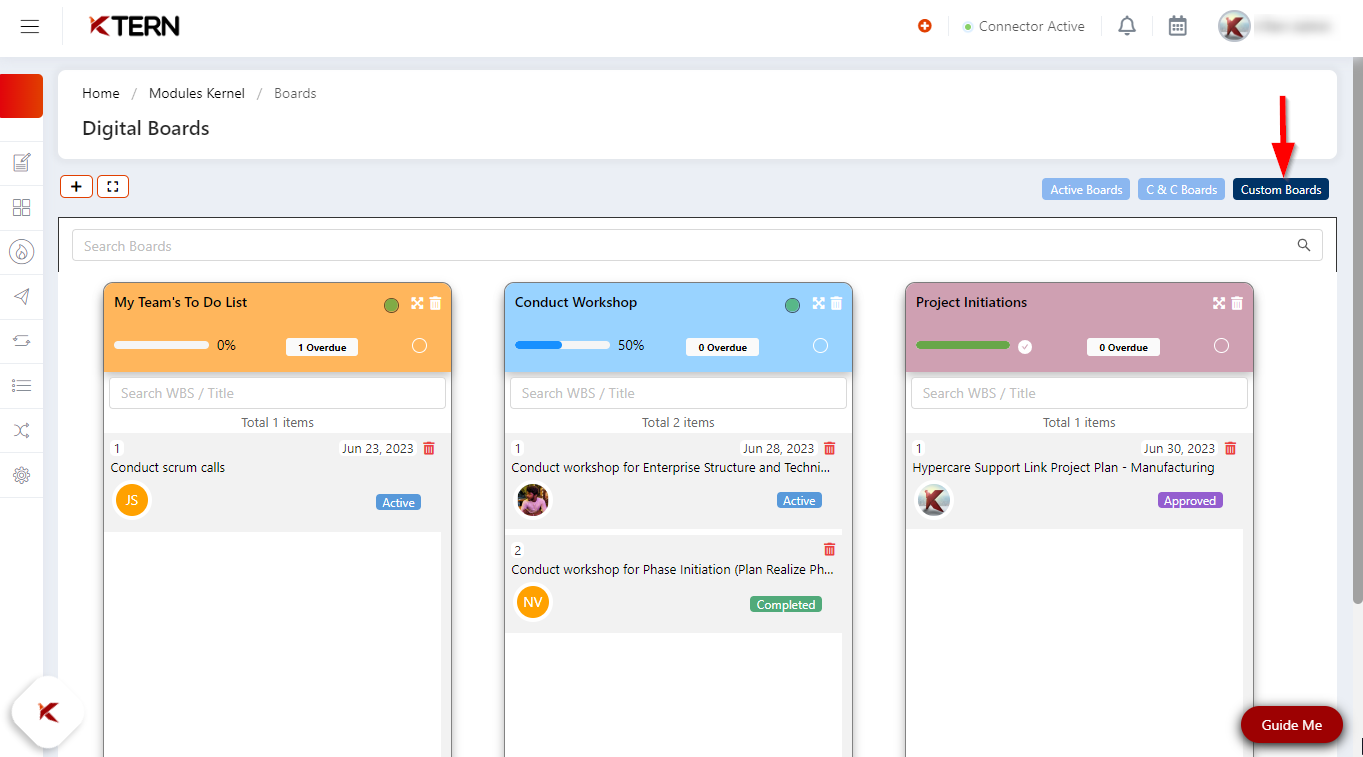Boards
- Digital Boards is a collection of project activities displayed in the form of cards, which helps to govern and update activities more easily.
- Digital boards encompass a collection of tasks generated through two distinct processes: the Clone and Create method and the Custom method.

- Boards can be conveniently viewed in a card format, providing a user-friendly interface.
- These digital boards facilitate various functions such as viewing tasks for the current sprint, productive scrum calls, and enabling inline editing of task’s status.
- This streamlined approach allows users to access a comprehensive list of boards, each associated with various modules. Additionally, creating new boards is effortless and user-friendly.
- This efficiently enables users to save time, ensure consistency, and streamline project workflows, resulting in increased productivity.
Types of Boards
In Digital Projects, the following are the three types of boards:
(i). Active Boards
(ii). C & C Boards
(iii). Custom Boards
Let’s look in detail about these three different types of boards.
(i). Active Boards: “Active Boards” refers to the boards that are currently active.

(ii). C & C Boards: The acronym “C & C Boards” represents the “Clone and Create Board.” The C & C Boards contain all the boards along with the process activities that have been created through Clone and Create. Users have the option to search and access their respective boards through either project work items name or by process GSI such as manufacturing, asset management, sourcing and procurement in SAP have dedicated boards for easy viewing.

(iii). Custom Boards: : “Custom Boards” refers to personalized and tailored boards created by the user for their own governance. The tasks within these boards are independent and will not be reflected in the project plan.

Benefits of Boards
-
With Digital Boards, users can enhance efficiency by quickly setting up standardized boards for clone and created tasks and ongoing processes.
-
Digital boards assist project managers and customer success managers in maintaining good governance over their activities.
-
It empowers teams to maintain a consistent structure and predefined workflows,leading to improved project execution and better outcomes.
-
Timeline View: The number of child boards corresponding to a parent task can be viewed in WBS column of the timeline.
-
Custom Dashboard: Digital Boards provide a to-do list dashboard that enables users to create, assign, and track tasks in real-time. This feature helps in streamlining task management, assigning responsibilities, and ensuring timely completion of project tasks.
-
Time Savings: Active boards will display the boards associated with the current sprint. This time-saving advantage enables teams to concentrate on project execution and timely delivery.
-
Consistency and Standardization: The template of a board is predefined where the users could give the task name, assigned to whom, duration alone. Here the teams can maintain a standardized structure, workflows, and labels. This consistency fosters better collaboration, reduces confusion, and promotes efficient project management practices.
-
Flexibility and Customization: The custom boards can be tailored to meet the specific needs of each project, allowing users to customize the layout, metrics, and data displayed. This flexibility ensures that the boards align with project workflows and provide relevant information for effective decision-making. They can modify the board’s title, adjust column names, add or remove cards, and make other changes as needed.
-
Data-Driven Decision Making: Digital Boards present project data and metrics in a visually appealing format, making it easier to interpret and analyze. This data - driven approach empowers teams to make informed decisions, identify areas of improvement, and optimize project outcomes.
-
Real-Time Visibility: Digital Boards offer real-time updates on project progress, enabling stakeholders to have a comprehensive overview of the project’s status. This visibility helps in identifying bottlenecks, tracking milestones, and making timely adjustments.